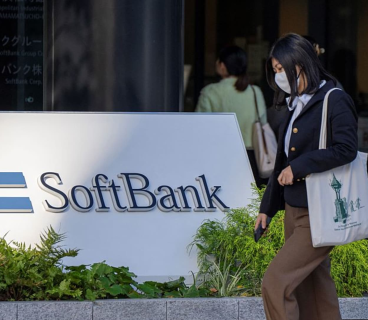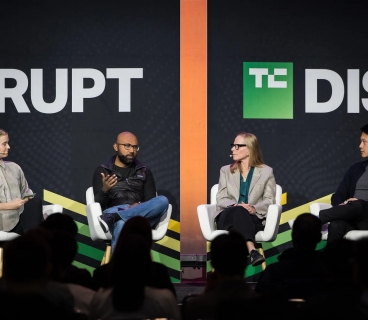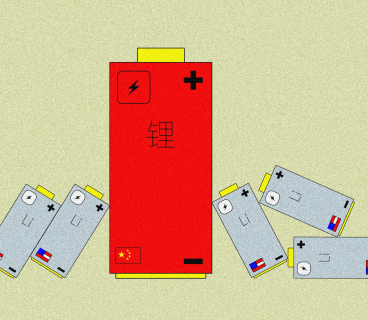When I stepped in to run the company that would become Kaspi.kz in 2007, it was a bank with no online presence that had been struggling to survive amid a global financial crisis. Today, it is the most widely used platform in Kazakhstan for financial and government services, payments, and e-commerce. It serves 75% of the population and generates $2 billion in annual net income on revenues of just under $5 billion. The U.S. equivalent might be having PayPal, Amazon, Capital One, Booking.com, and Instacart all in one app. How did we effect such a dramatic transformation? With an unwavering focus on creating and delivering more value to customers.
There’s no better illustration of this than our decision to create a single superapp to house all our services. At the time, marketing experts told us people wouldn’t want to hold savings or checking accounts with the same brand they bought kitchen appliances and clothing from. IT experts told us we needed different interfaces for each business because different online activities required drastically different user experiences. But was it best for customers to download multiple apps and deal with numerous passwords and log-ins? Or to get everything they need to manage their lives in one place?
The answer was clear. Our mission was and still is to improve people’s lives through innovation, making everything we touch cheaper, faster, and more convenient. We knew the superapp was the best way to do it.
And in the years since, we’ve been proven right. Not only do we have the greatest penetration in our home market of any technology company, we have the highest engagement too. Seventy percent of the people who use our app do so daily—something no social network can boast. Our customers conduct an average of 73 transactions per month—more than PayPal sees from the average North American user in a year. And we process more than 10 billion transactions annually—four times what Visa and Mastercard do in Kazakhstan combined.
We’ve watched the development of superapps in other geographies—most notably China—with interest. But having designed our organizational culture, structures, processes, and incentives to prioritize customer needs, we believe we have a unique story to tell. Now, as a Nasdaq-listed company expanding into Türkiye, we’re keen to share insights into our business model with the rest of the world.
An Untapped Market
I grew up in Georgia—the country, not the U.S. state—in a family that always prioritized learning. Even if we didn’t have the money for meals, my parents found a way to pay for my math, physics, and English tutors. After earning a bachelor’s degree in business from the European School of Management, I partnered with some classmates and professors to set up a strategic advisory and auditing firm, which grew to be one of the largest in our country. In 2001, while I was in the MBA program at Harvard Business School, the company became part of Ernst & Young.
After graduation, I knew I wanted to remain an entrepreneur in the high-opportunity Eastern European market, so I reached out to the leading private equity firm in the region. The managing partner said he didn’t have any openings, but I told him I would work for free; eventually he hired me, saying, “I don’t know what you’ll do, but we’ll find something.” Working out of our Moscow headquarters, I evaluated businesses across Georgia, Ukraine, Kazakhstan, and the rest of the region and within a year made partner. In 2006 we invested in a bank in Kazakhstan, Kaspiyskiy Bank; when the global economy faltered not long after, the value of that investment plummeted. My ambition had always been to take an operating role in one of our portfolio companies. Here was my opportunity to step in and not only turn a business around but also build it into something special.
At the time, finance industry observers were warning that technology companies would soon offer online services to usurp the role of traditional banks. My thought was that Kaspi needed to preempt that disruption by transforming itself into a technology company, and I wrote a six-page business plan for the new vision: Rebranded as Kaspi.kz, we would “improve people’s lives by creating innovative services.” Finance would be our foundation, but we would branch out into any area of customers’ lives that we could make better.
Launch and Enhance
The first step was building online payment services that would allow people to pay household bills—electricity, gas, water—online instead of with cash or checks, which usually required service fees. Our goal was to make the process fast and free, and we did. Over time we’ve gotten increasingly ambitious. In 2014 we launched an e-commerce marketplace, and most recently we’ve introduced government services, from birth registrations to driver’s license renewals.
To an outsider it might seem like we’re moving at breakneck speed, but within Kaspi the pace—of both product launches and development—feels measured and deliberate.
Consider e-commerce. The impetus for getting into this business was my 2013 attempt to buy a new computer. I went to a store and found one I liked, but when the salesperson mentioned that a sister store nearby was offering a grand-opening discount, I decided to go there instead. By the time I arrived, the model I wanted was gone. I returned to the original store, but now the only option available was a display model—so I went to a third store, which had the computer I wanted but not the matching printer. For that, I had to go to a fourth store. The whole process took several days, and I still wasn’t completely confident that I’d bought the right model at the right price. Then and there, I knew this kind of hassle was a consumer pain point Kaspi should tackle.
We initially kept it simple, creating a marketplace for electronics—mostly smartphones—and offering only the ability to buy now and pay later, with one merchant at a time, only via store pickup. Later, of course, we added an online shopping cart, more payment options, and delivery. Why not include more functionality and products more quickly? Because our aim is to address one use case extremely well before moving on to the next.
The winnowing of ideas starts early on. Anyone in the company can suggest a new product, but to be selected for development, it must have high potential to add everyday value for customers. Next, we focus on features. The team might have four suggestions, all of which will contribute to making the product superb. But we don’t work on all of them at once. We start with the most important and launch with it—first internally, then to family and friends, then to a limited group of users. Only after that do we layer on the second, third, and fourth features in ensuing quarters, starting with just 5% of users and expanding from there.
This staged approach not only makes the work more manageable for our teams, it also helps us to avoid overwhelming our customers. Adoption rates for simple offerings are much better than for complex ones. We also learn how people use the first feature, which informs and improves the rollout of the rest. Within a year, we have the originally envisioned product, but it’s been co-created with the customer.
Maintain and Refine
We are just as systematic about maintaining and refining our existing products and services. To that end, we now have around 50 product teams across the company, each backed by dedicated product owners, engineers, UX experts, data analysts, risk officers, customer service reps, and more, who are directly responsible for each of our offerings. They’re expected to deliver at least one high-quality add-on innovation per quarter, and their collective performance is measured by the Net Promoter Score (NPS) users give their product or service.
When we adopted our mission statement centered on improving people’s lives, we didn’t want it to just be something written on a wall—we wanted it to become a mantra we lived and breathed. To accomplish that, we needed a clear, simple metric to track our progress and hold ourselves accountable. In the beginning, we used two questions: “Would you recommend this to a friend or family member?” and “Why or why not?”
Today we gather more detailed information. For example, instead of asking “Are you happy with our e-commerce shopping?” we ask “Are you happy with express delivery?” or “…with the payment process?” or “…with our locker network?” But the goal is the same—to understand how we can better serve customers. If any of them share negative or neutral sentiments about anything, our independent feedback teams follow up to solicit more information. At product meetings we often play the recordings from those calls. Picture it: 120 of Kaspi’s key people listening intently as users describe exactly what they like and don’t like about our offerings in their own words. It’s an eye-opening experience.
Getting that kind of feedback is how we chose to kill what most companies would have seen as a successful credit card line. Though it accounted for a third of our profits, it was NPS negative, which meant the credit cards were improving our bottom line but not people’s lives. Thus, we concluded it wasn’t a good long-term business for us and got out.
Our monthly NPS surveys, which go to half a million customers, also point us toward how to improve. Teams review all the ideas raised as well as those we generate internally, including through our operations unit, which reports back from direct dealings with customers. Then preliminary research is done on 10 or so suggestions. After that, we abandon the least promising half and advance the remainder to the next level. Each suggestion must get a three-page explainer document that answers questions such as “Why this change or feature? How does it add value? What will it change about the user experience?” If everyone on the team finds the case for the new feature sound, we move into development, targeting implementation within three to six months.
The Future
We took Kaspi public in 2020 in part to allow our private equity owners to sell their shares but also because we wanted to showcase the future of corporate Kazakhstan on a global stage. The country might be known for its natural resources, but we are capable of developing unique business models too. We opted for the London Stock Exchange first because its investor base tends to better understand Eastern Europe. In 2024, amid more interest from the U.S. investment community, we moved our listing to Nasdaq, raising both our profile and our liquidity.
This year we closed on a 65% stake in Hepsiburada, one of Türkiye’s largest e-commerce companies. It has a pioneering, mission-driven vision and a strong, well-respected brand that is very much like Kaspi’s. Just as we are the only company from Kazakhstan on Nasdaq, it is the only Turkish one, and together we have the same goal of delivering customer-led innovation. Of course, with a population of 90 million, Türkiye represents a much larger market, but we are excited about enhancing Hepsiburada’s offerings with Kaspi-style quality and speed.
Over the past decade we have created a one-stop shop for people in Kazakhstan to save and spend money, buy and sell consumer goods and services, book travel, buy groceries, pay taxes, and obtain government credentials. As our makeup shifted from 90% retail bank to an even split among fintech, marketplace, and payments, we have helped to shift the country’s economy from 85% cash-based to 85% cashless, and we are one the top five corporate taxpayers there. And most important, we make our customers happy—with NPS ratings of 80 to 90 across the board.
We are proud to have become a symbol of national pride in Kazakhstan. We believe we can find success in other areas of our region by continuing to focus relentlessly on improving customers’ lives. And we hope to inspire other companies to do the same in their own parts of the world.












